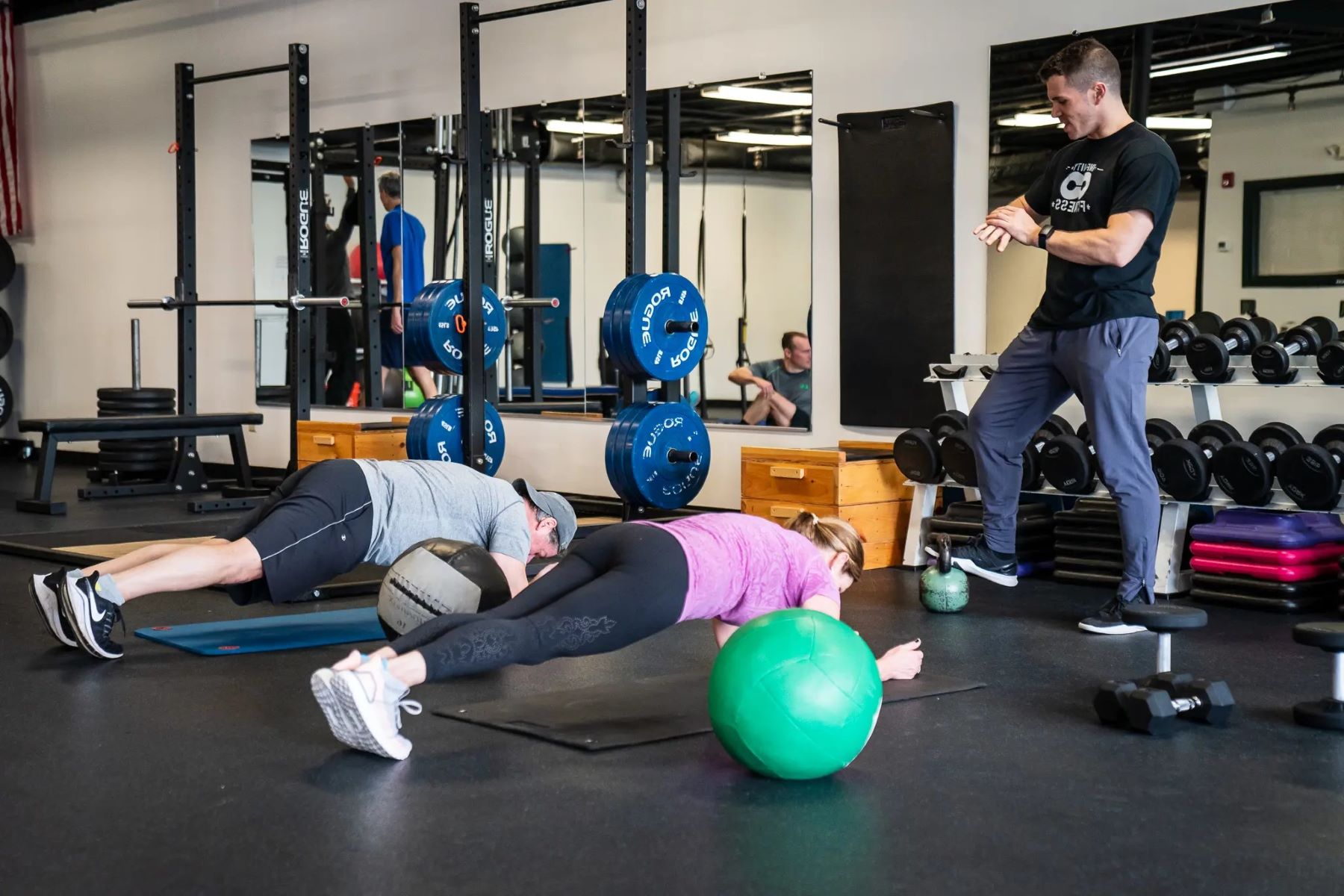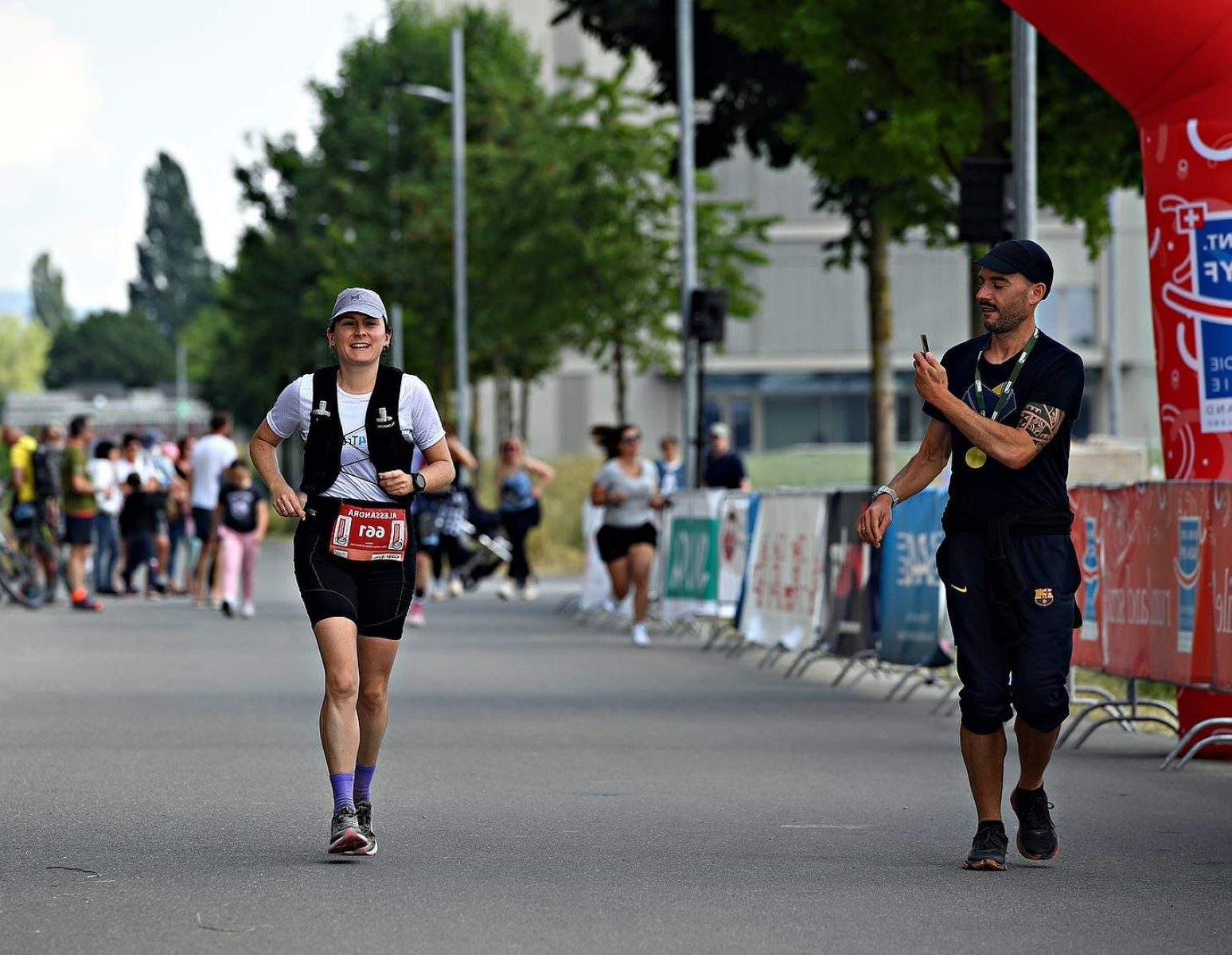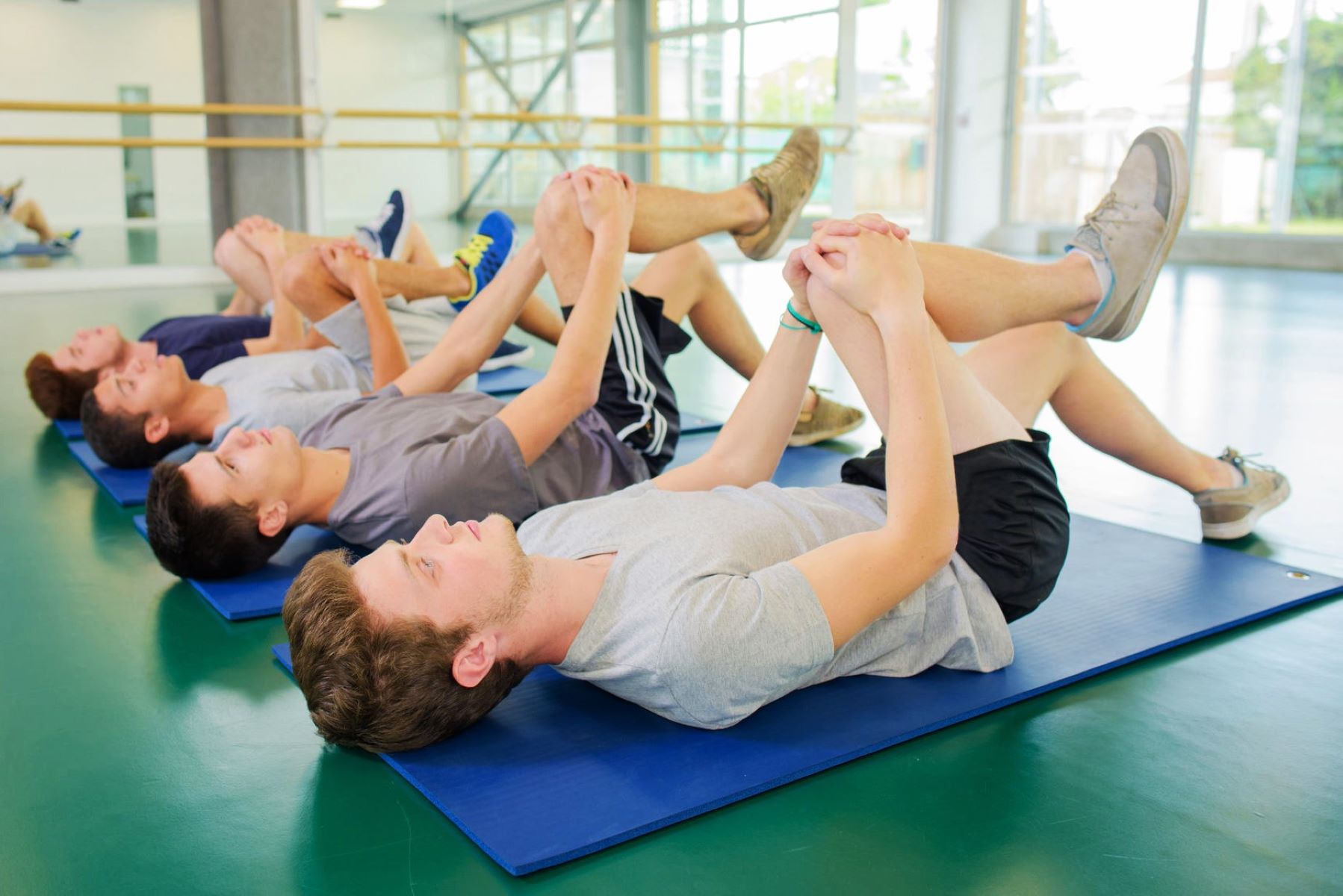Home>Training & Techniques>Three Recommended Speed Sessions For Beginner Runners


Training & Techniques
Three Recommended Speed Sessions For Beginner Runners
Published: March 4, 2024
Improve your running with these beginner-friendly speed sessions. Discover effective training & techniques to boost your performance.
(Many of the links in this article redirect to a specific reviewed product. Your purchase of these products through affiliate links helps to generate commission for Therunningadvisor.com, at no extra cost. Learn more)
Table of Contents
Introduction
As a beginner runner, the prospect of incorporating speed training into your routine may seem daunting. However, embracing speed sessions can significantly enhance your overall running performance and bring about a myriad of benefits. While it's important to build a solid foundation of endurance through consistent running, integrating speed training can take your running to the next level.
Speed training involves structured workouts designed to improve your running pace, increase cardiovascular fitness, and enhance muscular strength. These sessions are not solely reserved for elite athletes; they are equally beneficial for novice runners looking to progress and challenge themselves.
In this article, we will explore three recommended speed sessions tailored specifically for beginner runners. Each session offers unique benefits and presents an opportunity to diversify your training regimen. By incorporating these sessions into your routine, you can expect to see improvements in your speed, endurance, and overall running performance.
Embarking on a journey to incorporate speed training into your running routine requires dedication, patience, and a willingness to step out of your comfort zone. It's about pushing your limits, embracing the discomfort, and reaping the rewards of enhanced fitness and performance. With the right guidance and a positive mindset, you can embark on this exciting venture and witness the transformation in your running abilities.
Now, let's delve into the world of speed training and discover the exhilarating sessions that await you on your path to becoming a stronger, faster, and more resilient runner.
Read more: Is ‘crash’ Training Recommended For Runners?
Benefits of Speed Training for Beginner Runners
Speed training offers a multitude of advantages for beginner runners, extending beyond just improving running pace. By incorporating structured speed sessions into your training regimen, you can unlock a range of benefits that contribute to overall running performance and fitness. Here are some compelling reasons why beginner runners should embrace speed training:
-
Enhanced Cardiovascular Fitness: Engaging in speed training elevates your heart rate and challenges your cardiovascular system in a way that steady-state running does not. This variation in intensity stimulates greater cardiovascular adaptation, leading to improved heart and lung efficiency. As a result, your body becomes more adept at utilizing oxygen, enhancing overall endurance and stamina.
-
Increased Running Efficiency: Speed training helps refine running mechanics and form, leading to improved running economy. By incorporating intervals of higher intensity, you can enhance your stride length, cadence, and overall running technique. This, in turn, contributes to more efficient and fluid movement, allowing you to cover distances with greater ease and reduced energy expenditure.
-
Boosted Metabolism and Fat Burning: Introducing speed sessions into your training routine can elevate your metabolism and promote fat burning. High-intensity efforts during speed training stimulate the afterburn effect, where the body continues to burn calories at an elevated rate post-workout. This can be particularly beneficial for beginner runners aiming to manage weight and improve body composition.
-
Muscular Strength and Power Development: Speed training engages fast-twitch muscle fibers, which are crucial for explosive movements and sprints. By incorporating intervals and hill repeats, beginner runners can strengthen these muscle fibers, leading to improved power and overall muscular strength. This not only enhances running performance but also reduces the risk of injury by promoting balanced muscle development.
-
Mental Toughness and Resilience: Speed training challenges your mental fortitude and resilience, fostering a mindset of perseverance and determination. Pushing through challenging speed sessions cultivates mental toughness, preparing beginner runners to tackle obstacles and push through discomfort during races and longer runs.
-
Diversified Training Stimulus: Incorporating speed training introduces a varied stimulus to your training routine, preventing monotony and enhancing overall training adaptation. This diversity not only keeps training engaging and exciting but also promotes continuous improvement and progression.
By recognizing and embracing these benefits, beginner runners can harness the power of speed training to elevate their running capabilities and achieve new levels of performance and fitness. It's an exhilarating journey that promises growth, resilience, and a newfound appreciation for the transformative impact of speed training.
Session 1: Fartlek Training
Fartlek, a Swedish term meaning "speed play," is a versatile and enjoyable form of speed training that is particularly well-suited for beginner runners. This unstructured yet purposeful workout involves alternating between periods of faster running and periods of slower, recovery-paced running. Fartlek training can be performed on various terrains, such as roads, trails, or tracks, making it adaptable to different running environments.
The beauty of Fartlek training lies in its flexibility and spontaneity. Unlike traditional interval training, Fartlek does not adhere to strict time or distance parameters. Instead, it empowers runners to intuitively adjust their pace based on how they feel, allowing for a more organic and enjoyable running experience. This makes Fartlek an ideal introduction to speed training for beginners, as it fosters a sense of freedom and creativity in their workouts.
During a Fartlek session, runners can seamlessly transition between easy jogging, moderate-paced running, and faster sprints, incorporating bursts of speed based on landmarks or natural cues in the environment. For example, a runner may choose to sprint to the next lamppost, then ease into a recovery jog until the next intersection, and then pick up the pace again. This organic approach to speed variation not only keeps the workout engaging but also mimics the unpredictable demands of real-world running scenarios.
One of the key benefits of Fartlek training is its ability to improve both aerobic and anaerobic fitness. The varied intensity levels challenge the cardiovascular system, enhancing endurance while also stimulating fast-twitch muscle fibers, contributing to improved speed and power. Additionally, Fartlek sessions offer a low-pressure environment for beginners to explore their capabilities and gradually acclimate to higher speeds, without the rigid structure of traditional interval training.
Moreover, Fartlek training promotes mental engagement and mindfulness during running. As runners continuously adjust their pace based on intuition and environmental cues, they develop a heightened awareness of their body's capabilities and limitations. This mindful approach to running fosters a deeper connection with the act of running itself, promoting a sense of enjoyment and empowerment.
Incorporating Fartlek training into a beginner runner's routine not only enhances physical fitness but also cultivates a sense of spontaneity and joy in their running journey. It encourages runners to embrace the playful nature of speed training, fostering a positive and exploratory mindset that sets the stage for further growth and progression in their running endeavors.
Session 2: Interval Training
Interval training is a structured and highly effective form of speed training that involves alternating between periods of high-intensity effort and active recovery. For beginner runners looking to elevate their running performance, interval training offers a systematic approach to improving speed, endurance, and overall cardiovascular fitness.
The hallmark of interval training is its precise and structured nature. It involves running at a significantly higher intensity, often near or at maximum effort, for a specific duration or distance, followed by a period of active recovery, typically in the form of light jogging or walking. This cyclical pattern of exertion and recovery is repeated throughout the session, creating a potent stimulus for physiological adaptation.
One of the most compelling aspects of interval training is its ability to elicit significant improvements in aerobic capacity and anaerobic threshold. By pushing the body to operate at near-maximal effort during intervals, runners stimulate adaptations in their cardiovascular system, leading to enhanced oxygen utilization, increased stroke volume, and improved overall cardiovascular efficiency. These adaptations translate to improved endurance and the ability to sustain higher speeds for longer durations.
Furthermore, interval training serves as a catalyst for neuromuscular adaptations, enhancing running economy and biomechanical efficiency. The intense efforts during intervals engage fast-twitch muscle fibers, which are crucial for powerful and explosive movements. Over time, this leads to improved muscle recruitment patterns and coordination, ultimately contributing to enhanced running speed and efficiency.
For beginner runners, interval training provides a structured framework for gradually acclimating to higher intensities and faster paces. By incorporating intervals of varying durations and intensities, runners can systematically challenge their limits and progressively expand their speed and endurance capabilities. This gradual progression is instrumental in preventing injury and avoiding the pitfalls of overtraining, ensuring a safe and sustainable approach to performance enhancement.
Moreover, interval training offers a potent metabolic stimulus, promoting fat utilization and elevating post-exercise calorie expenditure. The high-intensity efforts during intervals trigger the afterburn effect, where the body continues to burn calories at an elevated rate post-workout, contributing to improved body composition and metabolic efficiency.
Incorporating interval training into a beginner runner's regimen not only cultivates physical adaptations but also fosters mental resilience and fortitude. Confronting the discomfort of high-intensity efforts and pushing through challenging intervals builds mental toughness, preparing runners to tackle the demands of races and longer runs with confidence and determination.
By embracing interval training, beginner runners can embark on a transformative journey of performance enhancement, reaping the rewards of improved speed, endurance, and overall running prowess. It's a structured and purposeful approach that holds the potential to unlock new levels of capability and resilience, propelling runners toward their goals with unwavering momentum.
Session 3: Hill Repeats
Hill repeats, a revered form of speed training, hold immense potential for elevating the performance and resilience of beginner runners. This structured workout involves tackling inclines or hills at a high intensity, followed by a recovery period, and then repeating the effort multiple times. While the prospect of conquering hills may seem daunting, the benefits reaped from hill repeats make them a valuable addition to a beginner runner's training regimen.
The primary allure of hill repeats lies in their ability to enhance muscular strength, power, and running economy. As runners ascend the incline, they engage a diverse array of muscle groups, including the quadriceps, hamstrings, glutes, and calves, in a more pronounced manner than flat terrain running. This heightened muscular engagement leads to improved strength and power development, particularly in the lower body, which translates to enhanced running performance on various terrains.
Furthermore, hill repeats serve as a potent stimulus for cardiovascular adaptation. The increased effort required to ascend the hill elevates heart rate and oxygen consumption, challenging the cardiovascular system in a unique and impactful way. This, in turn, leads to improved cardiovascular endurance and a heightened ability to sustain higher intensities, benefiting overall running performance.
From a biomechanical standpoint, hill repeats foster enhanced running form and efficiency. As runners navigate the incline, they naturally adjust their stride length, cadence, and posture to accommodate the terrain. This adaptive response not only strengthens stabilizing muscles but also promotes improved running mechanics, translating to enhanced running economy and efficiency on both uphill and flat surfaces.
Moreover, hill repeats offer a mental fortitude-building opportunity for beginner runners. Conquering challenging inclines requires mental resilience, determination, and a willingness to embrace discomfort. As runners repeatedly tackle the hill, they cultivate a mindset of perseverance and grit, preparing them to confront and overcome obstacles in races and longer runs.
Incorporating hill repeats into a beginner runner's training routine not only cultivates physical adaptations but also fosters mental resilience and fortitude. Confronting the discomfort of uphill efforts and pushing through challenging repeats builds mental toughness, preparing runners to tackle the demands of races and longer runs with confidence and determination.
By embracing hill repeats, beginner runners can embark on a transformative journey of performance enhancement, reaping the rewards of improved strength, endurance, and mental resilience. It's a purposeful and empowering approach that holds the potential to unlock new levels of capability and resilience, propelling runners toward their goals with unwavering momentum.
Read more: Top 5 Calf Stretches Recommended For Runners
Conclusion
In conclusion, the incorporation of speed training into the routine of beginner runners holds immense potential for transforming their running capabilities and overall fitness. The three recommended speed sessions—Fartlek training, interval training, and hill repeats—offer a diverse and comprehensive approach to enhancing speed, endurance, and resilience. By embracing these sessions, beginner runners can embark on a journey of growth, progression, and newfound confidence in their running abilities.
Fartlek training, with its playful and unstructured nature, introduces beginners to the exhilarating world of speed training in a low-pressure and enjoyable manner. It fosters a sense of freedom and creativity, allowing runners to intuitively explore their capabilities while reaping the benefits of improved aerobic and anaerobic fitness.
Interval training, characterized by its structured and systematic approach, provides a potent stimulus for physiological adaptation, enhancing aerobic capacity, neuromuscular efficiency, and metabolic function. It serves as a catalyst for gradual progression, empowering beginners to push their limits and expand their speed and endurance capabilities in a safe and sustainable manner.
Hill repeats, revered for their ability to enhance muscular strength, cardiovascular endurance, and mental resilience, offer a transformative training stimulus for beginner runners. Tackling challenging inclines cultivates a mindset of perseverance and grit, preparing runners to confront and overcome obstacles with unwavering determination.
By embracing these recommended speed sessions, beginner runners can unlock a myriad of benefits, including enhanced cardiovascular fitness, increased running efficiency, boosted metabolism, muscular strength and power development, mental toughness, and diversified training stimulus. These sessions not only elevate running performance but also foster a sense of joy, empowerment, and resilience in the running journey.
In essence, speed training is not solely about improving running pace; it's about embracing a mindset of growth, resilience, and continuous improvement. It's about pushing boundaries, conquering challenges, and redefining what is possible. As beginner runners integrate these speed sessions into their training regimen, they set the stage for a transformative journey of self-discovery, empowerment, and unparalleled running achievements. The path to becoming a stronger, faster, and more resilient runner begins with the embrace of speed training—a journey that promises growth, resilience, and a newfound appreciation for the transformative impact of speed training.















